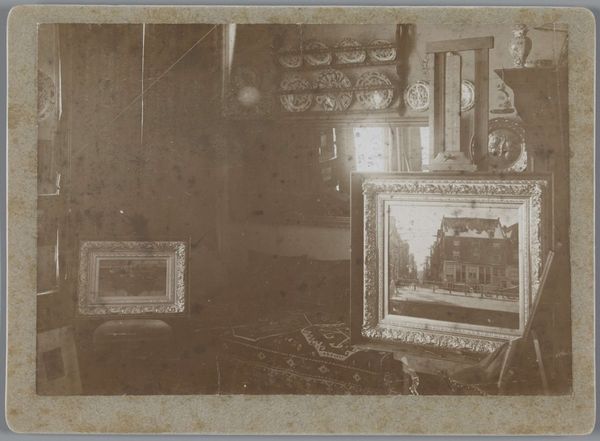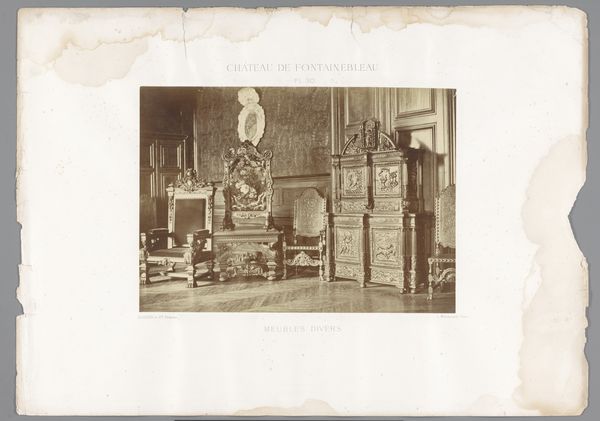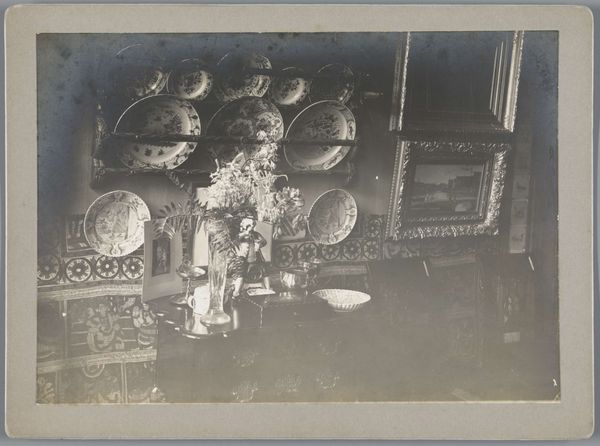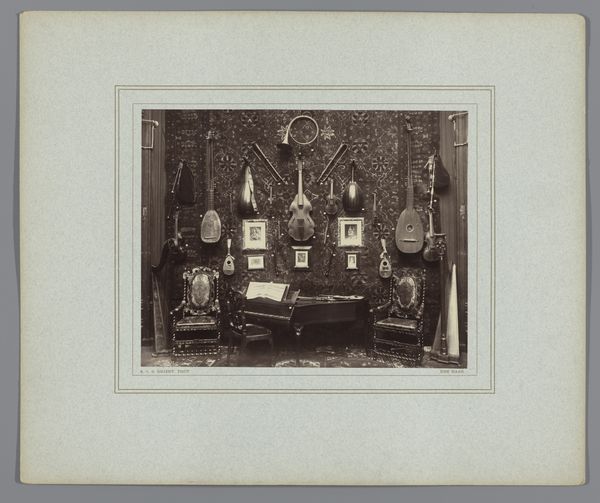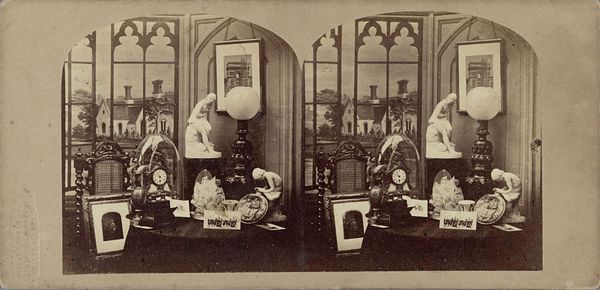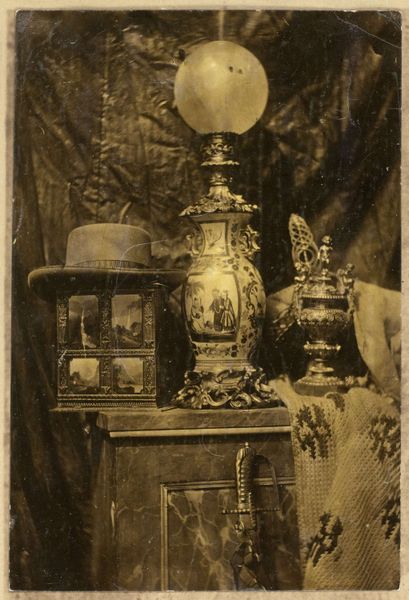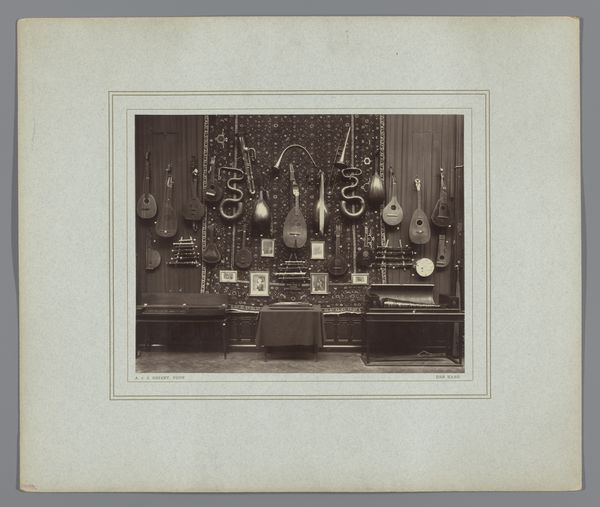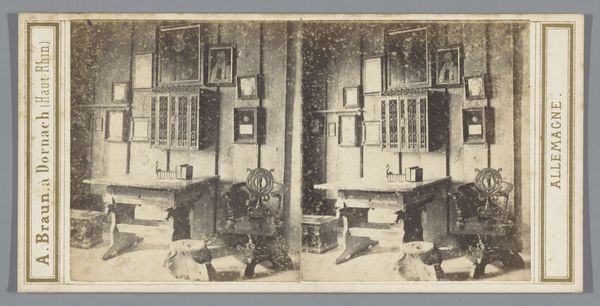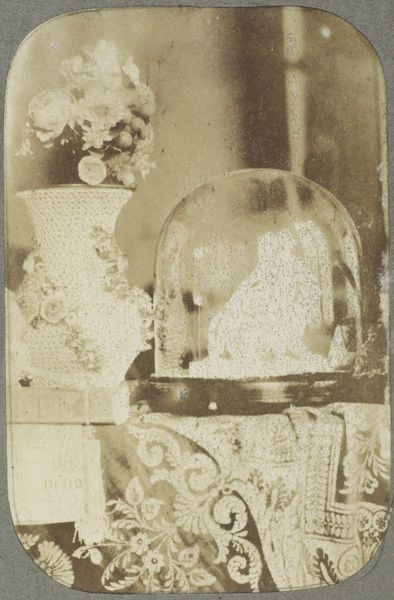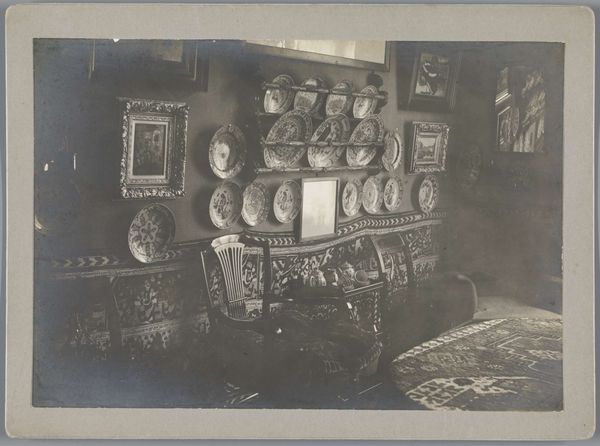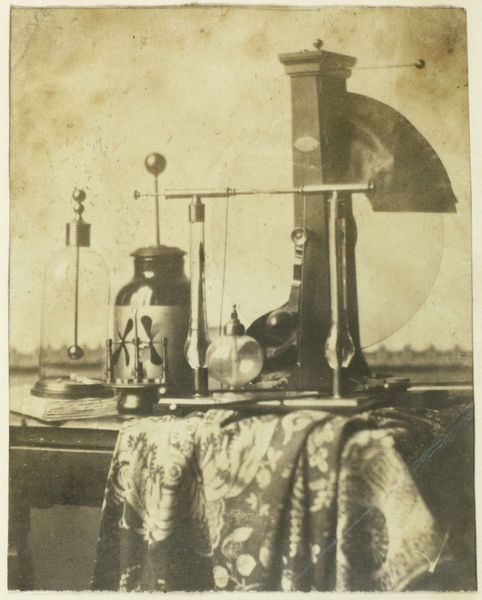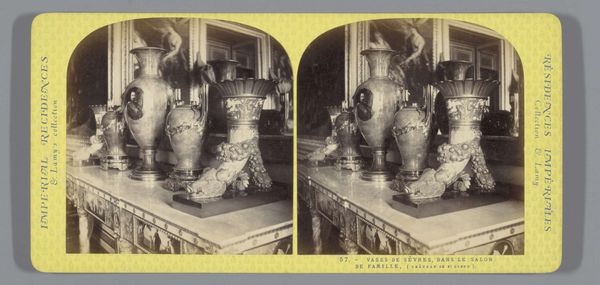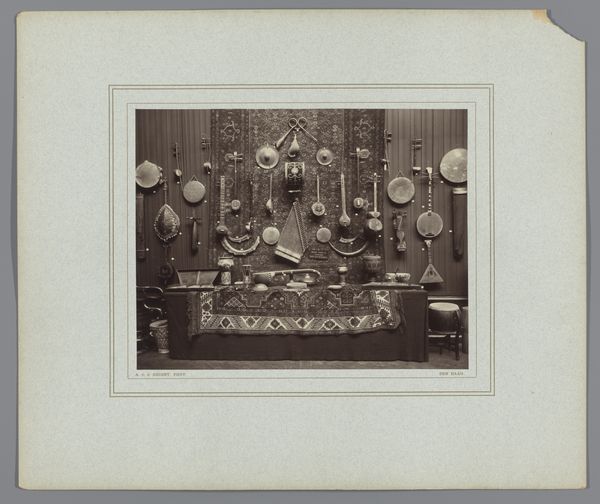
print, photography, gelatin-silver-print
still-life
photography
gelatin-silver-print
history-painting
realism
Dimensions: 23.1 × 34.5 cm (9 1/8 × 13 9/16 in.)
Copyright: National Gallery of Art: CC0 1.0
Editor: This is “Treasury of Reims Cathedral,” a gelatin silver print photograph from around 1854 by Charles Marville. The lighting creates a hushed, reverent atmosphere, almost like stepping into a sacred space. There’s something quite intriguing about the arrangement of these precious objects. What catches your eye, looking at this work? Curator: Well, for starters, it's a carefully constructed stage. The objects feel almost like actors waiting for a play to begin, wouldn’t you agree? Look at the way Marville plays with light and shadow; it feels both reverent and documentary. There's also something about the old inscriptions in the background, remnants of lives touched by this very cathedral, perhaps even contemporary with the objects. Doesn't it make you wonder about the stories these items could tell? Editor: Definitely! I was so focused on the still life arrangement that I hadn’t really noticed the inscriptions at first. It makes the photograph feel like it's capturing not just objects, but layers of history, and perhaps it invites you to think of mortality and how humans make marks through time. How do you think this photograph speaks to the Realist movement, with which it is sometimes associated? Curator: Good question. In Realism, there is a deliberate attempt to see beauty in the mundane, wouldn’t you say? Now, these objects might not appear “mundane” in themselves. But in a way, photography itself could be interpreted as capturing the mundane truth. Furthermore, Marville’s perspective isn't sugar-coated; he shows us the real textures, the wear and tear. The Realism here comes from the refusal to romanticize; it is a straightforward record of beauty, yes, but as it is found. How does it resonate with you in this sense? Editor: I see what you mean. It's not trying to create an idealized version, but rather presenting these historical items with their context as truthfully as possible. I now better appreciate how the "documentary" and the "artistic" blend seamlessly. Curator: Precisely. Marville invites us to consider time, beauty, and memory through his deliberate lens. It is through his artistic interpretation of a set of precious religious objects that we gain the true insight of time made and art’s value to record human creation and its effects.
Comments
No comments
Be the first to comment and join the conversation on the ultimate creative platform.
